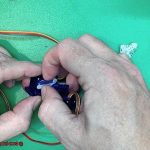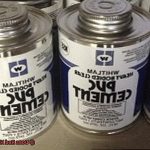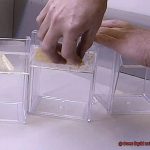Imagine this: you’re in a tight spot, with your treasured leather handbag or beloved shoes screaming for attention. They’re in desperate need of repair, and you’ve heard whispers about the magical powers of leather glue. But, is it all just smoke and mirrors? Fear not, my dear readers, as we embark on an exhilarating journey to uncover the truth behind the age-old question – does leather glue really work?
Let’s paint a vivid picture: you’re at a glamorous event, and suddenly, disaster strikes. Your elegant leather clutch suffers an unexpected tear. Panic sets in as you contemplate the exorbitant cost of professional repair or even replacing the entire accessory. But wait. Enter leather glue – the adhesive superhero promising seamless fixes and saved cash.
Throughout this extraordinary expedition, we’ll dive deep into the realm of leather glue, unraveling its true potential and dissecting the factors that influence its effectiveness. From deciphering the diverse array of available options to mastering foolproof application techniques, we’ll arm you with knowledge to make an informed decision about breathing new life into your prized leather goods.
Join us as we debunk common myths surrounding leather glue and showcase real-life triumphs where it has resurrected cherished items from their sorry state. Along our journey, we’ll shed light on when leather glue shines brightest and when alternative solutions may be your saving grace for leather repairs.
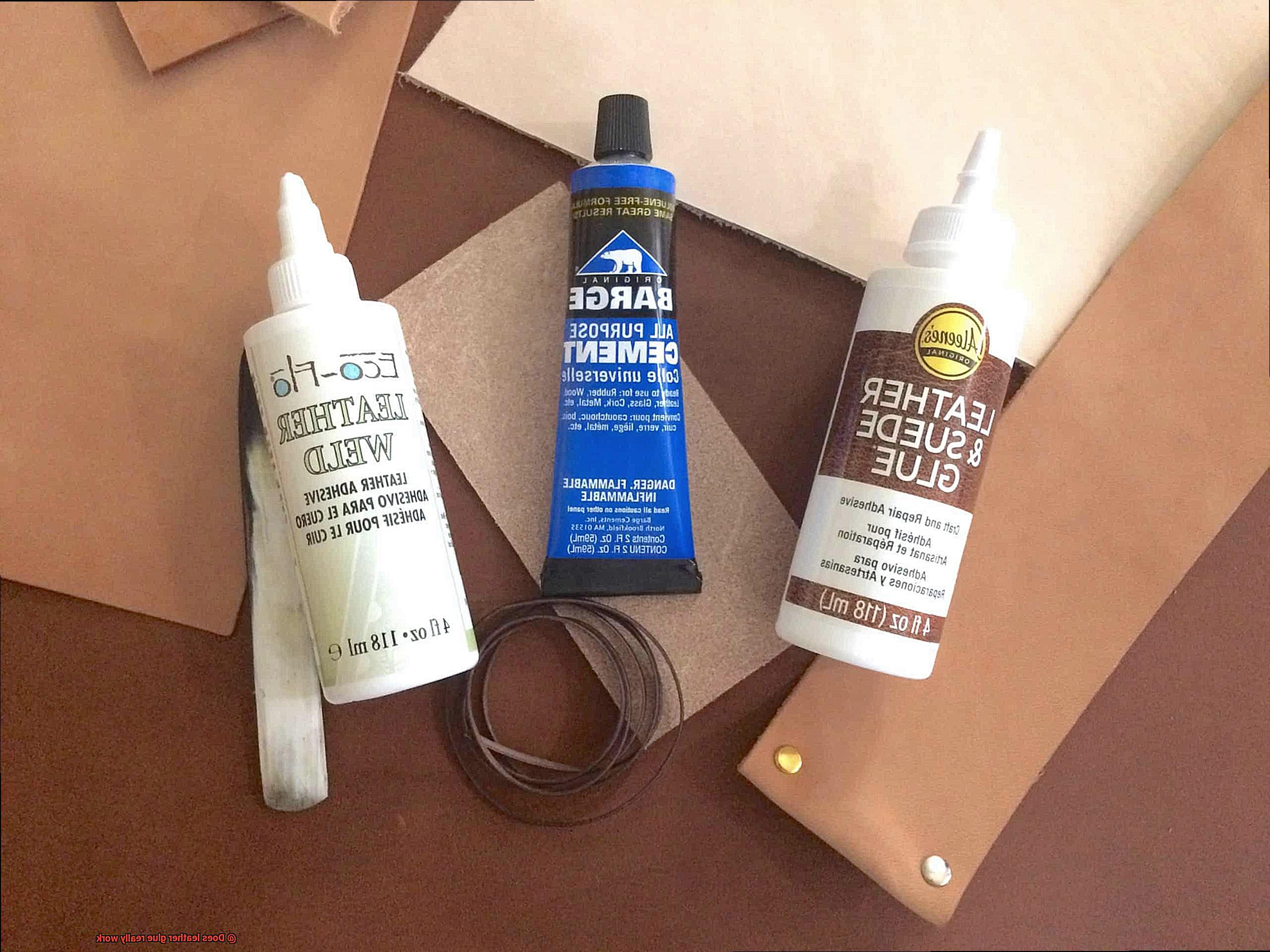
So, brace yourself for an adventure that will unlock the secret world of leather glue and reveal if it truly lives up to its legendary status. Get ready to be captivated by the limitless possibilities contained within that tiny tube of adhesive – because discovering the truth is just one click away.
What is Leather Glue?
Contents
That’s where leather glue enters the scene. In this comprehensive guide, we will explore the world of leather glue, uncovering its secrets from composition and applications to expert tips that guarantee outstanding results.
Demystifying Leather Glue:
- Leather glue is an adhesive meticulously crafted to join leather materials seamlessly.
- It is composed of synthetic polymers like polyurethane or cyanoacrylate, which create an unbreakable bond.
- Unlike other glues, leather glue retains its flexibility even after curing, allowing the bonded leather pieces to move freely without compromising strength.
Selecting the Perfect Leather Glue:
- Leather glue comes in versatile forms: liquid, gel, or paste.
- Liquid glue is ideal for general-purpose bonding with its rapid drying time.
- Gel glue grants more time for intricate projects, ensuring precise application before setting.
- Paste glue, with its thicker consistency, tackles repairs or fills gaps in leather flawlessly.

Key Features Enhancing Leather Glue’s Power:
- Flexibility: As time goes by, leather glues maintain their flexibility, enabling leather items to bend and move without cracks or breaks in the bond.
- Durability: High-quality leather glues are formulated to conquer moisture, heat, and other environmental challenges that may confront leather items.
- Strength: When used correctly, leather glues create a robust and enduring bond built to withstand the demands of daily use.
Expert Tips to Maximize Leather Glue’s Potential:
- Cleanliness: Before applying leather glue, ensure that the surfaces are pristine and free from dirt, dust, or oils. A gentle wipe with a damp cloth or mild leather cleaner will do the trick.
- Application: Apply leather glue sparingly and evenly on both surfaces, adhering to the manufacturer’s instructions.
- Drying Time: Allow ample drying time before handling or subjecting the glued area to stress, guaranteeing optimal results.
Why Does Leather Glue Work?
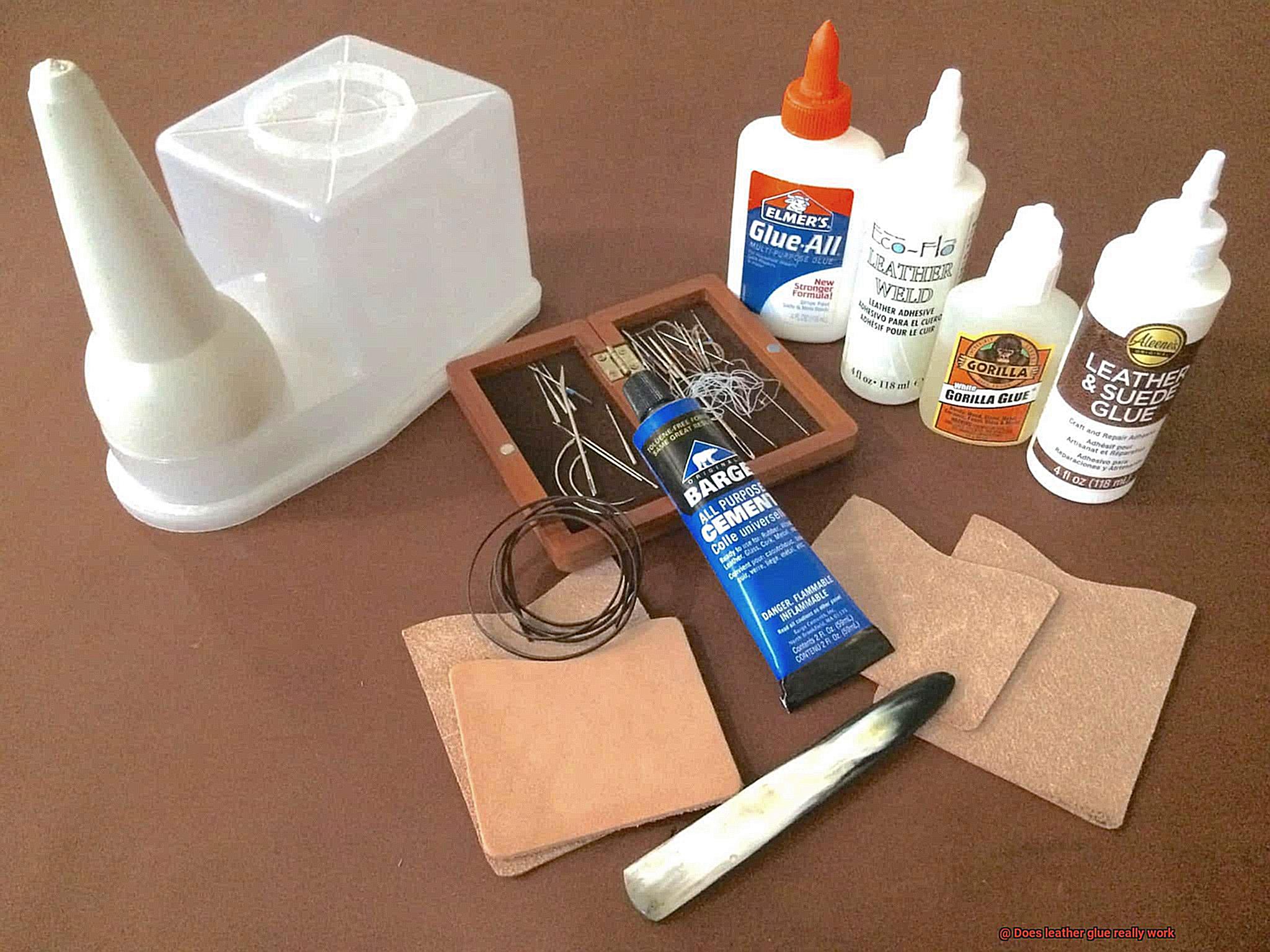
Today, we embark on a thrilling exploration of the captivating world of leather glue, delving deep into the secrets behind its extraordinary effectiveness. Imagine reviving your cherished leather item to its former glory, with a bond so strong it could withstand the test of time. Prepare to be amazed as we unravel the mysteries of why leather glue works like pure magic.
Composition – A Perfect Symphony of Ingredients:
What makes leather glue so special? It all comes down to its carefully crafted composition. Leather glue is a masterpiece made by blending synthetic polymers, solvents, and ingenious additives.
These polymers weave intricate chains that intertwine with the very fabric of the leather, forming an unyielding bond akin to the strength of an ancient fortress. The solvents work their enchantment by dissolving these polymers, allowing them to seep into the porous surface of the leather and create a bond as resilient as a mythical creature. And let us not forget about the additives.
They bring forth their unique powers, enhancing flexibility, boosting adhesion, and even expediting the drying process. It’s like having an army of alchemists concocting a potion of pure mastery.
Conquering Leather’s Unique Challenges:
Leather is no ordinary material; it possesses its own distinctive character. Fear not. Leather glue is designed to conquer these challenges with grace and finesse. Leather’s flexibility, breathability, and durability are embraced by leather glue, as it forms an unbreakable alliance with these qualities. Whether it’s your treasured leather jacket or your trusty boots, leather glue ensures that your beloved possessions remain unscathed through life’s wildest escapades.
Flexibility: A Dance of Endurance:
Picture your leather item gracefully twirling through its daily routine – bending, stretching, and twisting. It’s a demanding performance for any adhesive to match. Yet, leather glue emerges as the star of the show, showcasing its unrivaled flexibility like a seasoned dancer on stage. Even after it has dried, leather glue retains its supple nature, adapting to the movements and stretches of your leather item without ever compromising the bond. So go ahead and let your leather item take center stage – leather glue is your perfect partner in the grand symphony of endurance.
The Key Factors of Effective Leather Glue
Step into the world of leather glue, where the alchemy of adhesion meets the artistry of leather craftsmanship. As a seasoned expert in the realm of leather glue, I am here to unveil the key factors that distinguish an effective adhesive in the realm of bonding leather materials. So, take a seat and prepare to embark on a captivating journey through the world of leather glue.
First and foremost, the ability to adhere to diverse types of leather surfaces is paramount for any effective leather glue. Leather comes in an array of textures, thicknesses, and finishes, demanding a glue that can harmoniously unite this vast spectrum of materials. Whether you’re working with velvety smooth or sumptuously suede leathers, or even exotic hides, an exceptional leather glue will forge a bond that defies the passage of time.
Now, let us delve into the realm of pH levels. Leather is an organic material that can be exquisitely sensitive to acidic or alkaline substances. Thus, an effective leather glue must boast a neutral pH, ensuring that no harm or discoloration befalls the beloved leather. After all, our intention is to revive and enhance our cherished leather treasures, not mar them.
Time plays a crucial role when it comes to drying. A well-crafted leather glue will manifest a drying time that strikes the perfect balance, neither too hasty nor sluggishly slow. This precise timing is vital for establishing a steadfast bond and safeguarding the pristine integrity of your leather possessions. Patience is indeed a virtue when it comes to creating enduring connections.
Strength is an indispensable ingredient in any potent leather glue. We yearn for an adhesive that can withstand stress, pulling, and movement without compromising the steadfastness of the bond or the resilience of the leather itself. Our aim is longevity – we rely on our leather goods to accompany us on life’s journey for years to come. Thus, we must select a glue that imbues our leather treasures with unwavering durability.
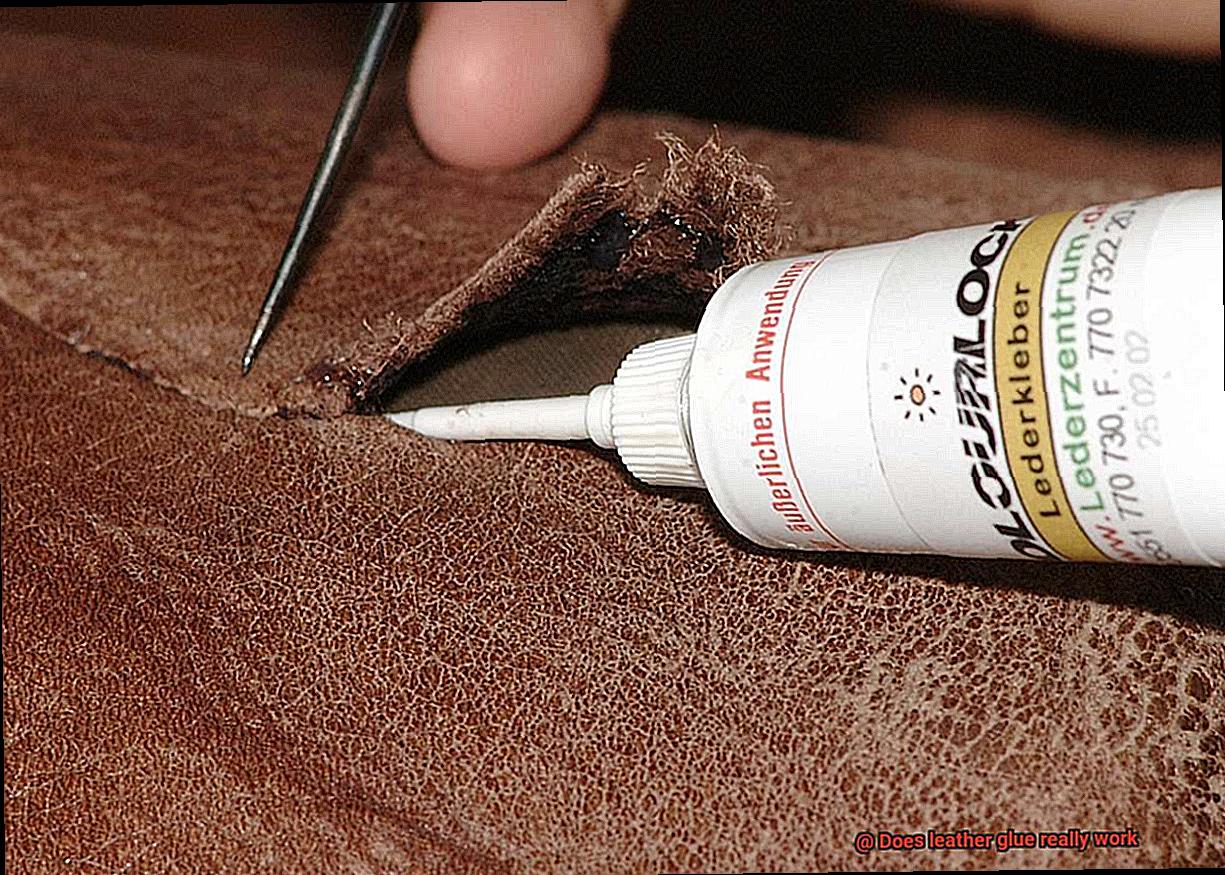
Flexibility, too, holds a vital place in the realm of leather glue. Leather materials possess the remarkable ability to bend, stretch, and move with ease. Consequently, the adhesive must possess an inherent flexibility that can accommodate these supple motions without succumbing to cracks or fractures. A flexible bond ensures that your leather items remain unscathed even as they gracefully embrace everyday wear and tear.
How to Use Leather Glue for Optimal Results
When it comes to working with leather, using the right adhesive can make all the difference in creating a strong and durable bond. Leather glue is specifically formulated for this purpose, but to achieve optimal results, it’s important to follow a few key steps. As an expert in leather glue, I will guide you through the process with these expert tips and techniques.
Preparing the Surface: A Solid Foundation
Before diving into your leather project, take the time to properly prepare the surface. Think of it as creating a solid foundation for your bond. Begin by giving the leather a deep cleanse using a mild soap and water solution. This removes any dirt or grease that could hinder the adhesive’s effectiveness. Once cleaned, ensure that the leather is completely dry before moving forward.
To further enhance the bond, gently roughen the surface using sandpaper or a fine-grit abrasive pad. This step creates tiny grooves in the leather, allowing the glue to grip onto the fibers more effectively.
Compatibility Test: A Sneak Peek into Success
Before committing to gluing your entire leather project, always conduct a compatibility test on a small, inconspicuous area. Apply a small amount of glue and observe any adverse reactions or discoloration. This step is particularly crucial when working with delicate or expensive leather materials. It gives you a sneak peek into the success of your adhesive choice.
Applying the Glue: The Art of Precision
Now comes the exciting part – applying the glue. Use a brush or spatula to apply a thin, even layer of glue on both surfaces that need to be bonded. Remember, precision is key. Applying too much glue can lead to unsightly seepage and compromise the overall strength of the bond.
Press and Hold: The Power of Patience
Once the glue is applied, bring the surfaces together firmly and hold them in place for a few minutes. This step harnesses the power of patience, allowing the glue to bond properly. For added support, use clamps or heavy objects to keep everything securely in position while the glue dries.
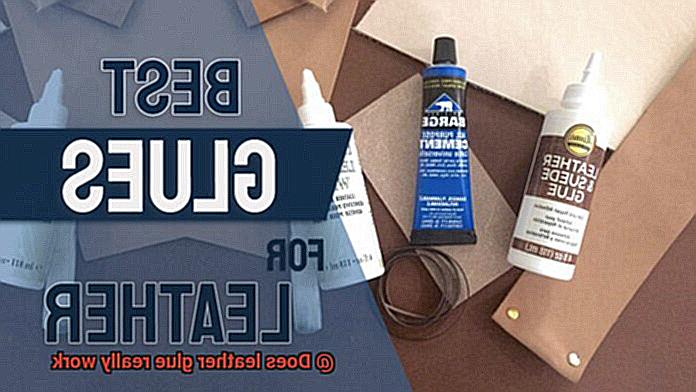
Patience is Key: The Waiting Game
To achieve optimal results, exercise patience and resist the urge to rush. Allow the glued leather to dry completely before handling or subjecting it to stress. The drying time may vary depending on the type of glue used, so always refer to the manufacturer’s instructions for specific guidance. Remember, it’s better to wait a little longer than to compromise the bond by rushing.
Inspect and Reinforce: The Quest for Perfection
After the glue has dried, inspect the bonded area closely for a strong and secure bond. If any weak spots or separation are detected, fear not. Apply additional glue and repeat the bonding process to reinforce those areas. This quest for perfection ensures that your leather project will stand the test of time.
Different Types of Leather Glues
In this comprehensive guide, we will delve into the world of leather glues and explore their diverse characteristics, uses, and preparation techniques for successful bonding. Get ready to unlock the secrets behind the effectiveness of these remarkable adhesives.
Contact Adhesive: The Indomitable Bonding Powerhouse
When it comes to creating an unbreakable bond, contact adhesive takes center stage. This extraordinary glue is renowned for its ability to securely bond leather to leather or various other materials like fabric or wood. Its quick drying time ensures that your projects come together in a flash, resulting in a robust and long-lasting hold. Whether you’re revamping upholstery or fixing shoe soles, contact adhesive is your ultimate go-to for reliable and enduring bonds.
Water-Based Adhesive: Safety Meets Versatility
For those who are sensitive to chemical odors or working with lighter weight leather, water-based adhesive is a true game-changer. Not only is this non-toxic glue safer to use, but it also offers easy cleanup with just water. Its flexible bond makes it ideal for a plethora of crafting projects and small repairs. With water-based adhesive in your arsenal, you can unleash your creativity without worrying about noxious fumes.
Gel or Paste Glue: Unleashing Strength Where It’s Needed
When vertical applications or extra-strong bonds are required, gel or paste glues come to the rescue. These thicker glues provide a longer curing time, allowing you to reposition the leather as needed before it sets permanently. Perfect for heavy-duty projects or situations where unyielding strength is paramount, gel or paste glues ensure that your creations hold together even in the most challenging circumstances.
Specialty Leather Glues: Tailored for Perfection
Just as leather comes in various forms, leather glues also cater to specific needs. Flexible adhesives are specifically designed to withstand bending and stretching without cracking, ensuring the longevity of your leather creations. Heat-resistant adhesives are a godsend for items exposed to high temperatures, maintaining their bond integrity even under scorching conditions. These specialty glues are tailored to perfection, guaranteeing the success of your unique projects.
Advantages of Using Leather Glue
Are you a fan of leather crafts or someone who loves to repair and restore leather items? If so, then you probably know the importance of having a reliable adhesive that can create strong and durable bonds. That’s where leather glue comes into play. In this article, we will explore the advantages of using leather glue and why it should be a staple in your crafting or repair toolkit.
- Strong and Durable Bond: Leather glue is specifically formulated to adhere to leather surfaces, providing a secure hold that can withstand regular use and abuse. Whether you’re fixing a torn leather jacket or creating a brand new accessory, leather glue guarantees that your bond will stand the test of time.
- Versatility: Not only does leather glue work wonders on leather materials, but it also bonds effectively with other fabrics such as suede and vinyl. This means that you can use leather glue for a wide range of projects, from upholstery repairs to crafting stylish handbags or belts.
- Flexibility: Unlike some other adhesives that dry stiff and rigid, leather glue remains flexible even after it dries. This ensures that your repaired or joined leather piece stays flexible and doesn’t become stiff and uncomfortable.
- Ease of Use: Leather glue is designed to be user-friendly, even for those who are not experienced in crafts or repairs. The convenient squeeze tubes or bottles with applicator tips allow for precise application, while the thick consistency prevents dripping or running during application. Plus, many leather glues have a quick drying time, making them perfect for projects that require immediate bonding.
- Aesthetically Pleasing Results: When it dries, leather glue becomes clear, ensuring that the bonded area remains visually appealing. The transparent finish of leather glue allows your repairs or joins to seamlessly blend in with the rest of the leather, without any unsightly residue or marks left behind.
- Waterproof and Weather-resistant: Leather glue is often designed to be waterproof or weather-resistant, making it suitable for outdoor applications. Whether you need to repair a leather piece that will be exposed to rain or snow or are creating an outdoor accessory like a wallet or shoe, using leather glue ensures that the bond remains intact even in wet or harsh conditions.
Disadvantages of Using Leather Glue
In our previous section, we marveled at the wonders of leather glue and its ability to create unbreakable bonds. But like any product, there’s a flip side to consider. Let’s delve into the world of leather glue and uncover its disadvantages.
Messy Application Woes:
Working with leather glue can be a messy affair. It often necessitates the use of a brush or applicator to evenly spread the glue onto the leather surface. Unfortunately, this can lead to excess glue, leaving behind unsightly residue that’s stubborn to remove, potentially marring the beauty of your leather.
Bonding Blues:
Not all leathers are created equal, and neither is their compatibility with glue. Certain types of heavily treated or smooth-surfaced leather may not form a strong bond with leather glue. This means you could end up with a feeble connection that falls apart under minimal stress or strain, leaving you high and dry.
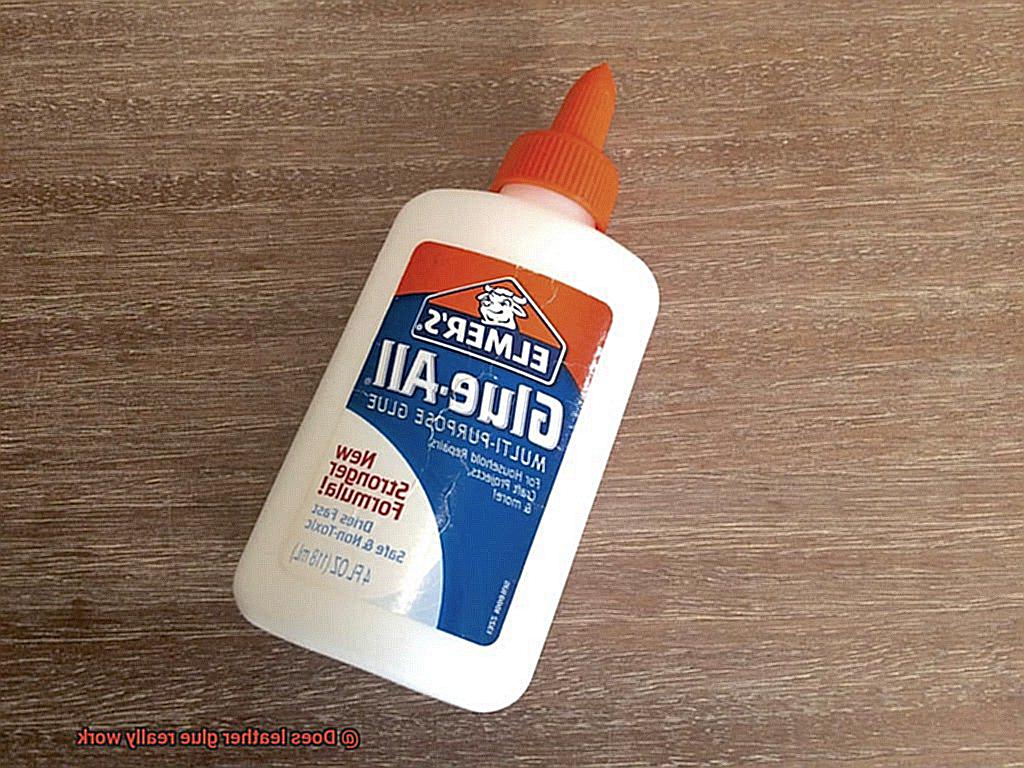
The Stench Struggle:
Let’s be honest – some leather glues don’t smell like a bed of roses. In fact, they emit pungent and unpleasant odors that can be bothersome, especially for those with sensitive noses or respiratory issues. These odors can linger long after the glue has dried, making it an uninviting experience to work with or wear glued leather items.
Rigidity Rules:
Once dried, leather glue may lack the flexibility needed for items like shoes or bags that endure bending and stretching. The inflexibility of the dried glue can result in cracks or breakages under pressure, leading to the separation of bonded leather pieces – a nightmare for any leather lover.
Sticky Situations:
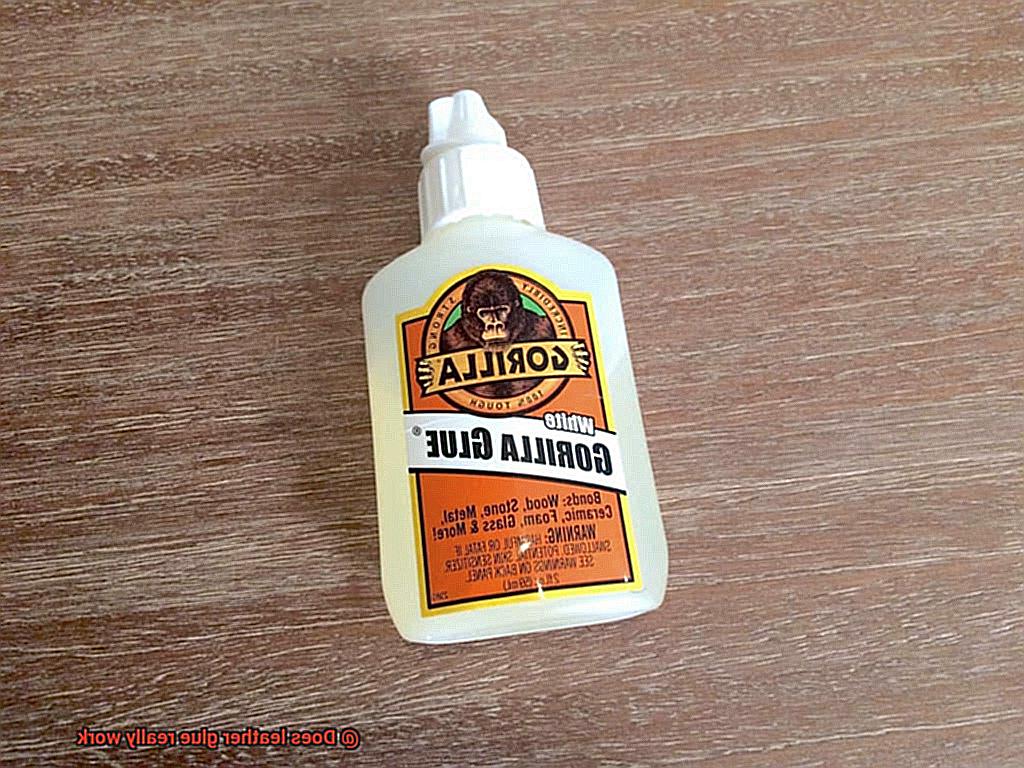
Mistakes happen, but removing leather glue is no walk in the park. Unlike other adhesives that dissolve easily with solvents, getting rid of excess leather glue often requires scraping or sanding. This process can damage the leather surface, leaving behind visible marks or scars, forever reminding you of your adhesive mishap.
Not a Universal Fix:
While leather glue works wonders for many repairs, it’s not a magical solution for all scenarios. If your leather item is torn or severely damaged, relying solely on glue may not provide an adequate fix. In such cases, stitching or patching might be necessary to ensure a more resilient and long-lasting repair.
CQjsemw30m0″ >
Conclusion
Leather glue, the adhesive designed specifically for bonding leather materials together, has been a subject of curiosity and skepticism. But does it really live up to its claims? The answer is a resounding yes. Leather glue not only works but also excels in providing strong and durable bonds that can withstand the test of time.
When it comes to repairing or creating leather items, such as shoes, bags, or upholstery, you need an adhesive that can handle the unique properties of leather. Leather glue is formulated to do just that. Its specialized formula ensures a secure bond that won’t easily peel or crack under stress.
One of the key advantages of leather glue is its versatility. It can be used on various types of leather, including genuine leather, faux leather, and even suede. Whether you’re working with smooth or textured surfaces, leather glue adapts effortlessly to ensure a seamless and long-lasting bond.
In addition to its strength and adaptability, leather glue offers ease of use. Its quick-drying nature allows for efficient application without wasting precious time waiting for it to set. Simply apply the adhesive to both surfaces, press them firmly together, and let the magic happen.
Furthermore, leather glue’s resistance to heat and moisture makes it an ideal choice for outdoor applications as well. Whether your project involves repairing a torn motorcycle seat or creating custom-made saddlery, this adhesive will hold up even in challenging environments.
It’s important to note that not all leather glues are created equal. To ensure optimal results, choose a high-quality brand recommended by professionals in the field. Investing in a reliable product will guarantee superior performance and peace of mind.
In conclusion, if you’re wondering whether leather glue really works, rest assured that it does – and exceptionally well at that. With its strength, versatility, ease of use, and ability to withstand various conditions, this adhesive is a must-have for any DIY enthusiast or professional craftsman working with leather.


